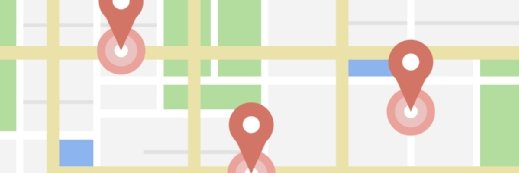
Baurzhan Ibrashev/istock via Get
What goes into selecting mobile health clinic equipment?
Healthcare in Action's mobile health clinic is outfitted with tools to deliver medicine tailored specifically for its primarily unhoused patient population.
When Healthcare in Action was first starting up, there was no roadmap or mobile health clinic equipment list to check off.
Sure, some health systems had started deploying vans outfitted with medical devices to promote community-based care for unhoused individuals, but there was no how-to for doing this, according to Benjamin Kaska, PA, the vice president of clinical operations for Healthcare in Action (HIA).
"Although it had been done, there was not a ton of research or not a ton of folks who were effectively doing this," Kaska said of HIA's earliest days.
As outlined in the first of this two-part series, HIA focuses on mobile medicine to promote health and well-being for Southern California's unhoused population. Based on the tenet that improving health outcomes is a key tool for reducing poverty and homelessness, HIA seeks to stabilize sick individuals who are also unhoused and prime them for brick-and-mortar treatment and transitional housing.
Part of achieving that goal is having the right personnel on the team all operating under a philosophy that works for their unique needs and skill sets.
But the other half is leveraging the tools necessary to deliver medicine in such a unique setting -- one that Kaska said hadn't widely been explored yet.
Outfitting sprinter vans for modern medicine
HIA, which is a member organization of the SCAN Group, had a few examples to draw from when building out its mobile medicine units, including Boston Healthcare for the Homeless and the USC Street Medicine program.
But looking beyond that, Kaska said it was his and his colleagues' previous experiences in medicine that inspired much of the tools they installed in their units.
"What we ended up doing was taking Sprinter vans or the transit vans that Amazon delivers with, taking the shell and taking it to an ambulance manufacturing company to get it converted into a mobile doctor's office," Kaska recalled.
A physician assistant/associate with extensive experience in a federally qualified health center (FQHC), Kaska said he looked at all of the tools that helped him deliver whole-person care and then some.
"We wanted to give every single service that I was able to provide at my FQHC," he stated. "I wanted to be able to bring that into the field. I did not want to have one thing that I couldn't do."
For example, HIA's mobile units have point-of-care ultrasounds, or ultrasound devices that connect to a phone or tablet to detect certain conditions, like intrauterine pregnancy or endocarditis.
Ultimately, the goal is to ensure patients do not have to transfer to a brick-and-mortar facility to get care, at least for now. Rather, the HIA van has the ability to assess and treat the most pressing health issues affecting the patient in that moment and move the patient to a more stable health status.
That's because many of the patients Kaska and his team see on the streets are not necessarily primed to received care in a more traditional, brick-and-mortar facility.
"Patients who are homeless, who are jonesing or who are floridly psychotic, they are not able to successfully make it into an urgent care and sit for an hour and a half while 10 patients go in front of them -- they would lose it," Kaska pointed out. "So, we wanted to be able to make sure that we were able to provide full scope primary care in the field."
Of course, there are moments where Kaska might not be able to fulfill the needs of a patient in that moment in time, either due to system constraints or a need for specialty consult. Again, technology is a salve in these moments as HIA continues to strive to stabilize patients and prepare them for more permanent healthcare and housing.
Leveraging telehealth to support patient needs
Telehealth and e-consults have been a boon for HIA when clinicians can't necessarily diagnose or treat a patient need, Kaska said. In particular, telehealth has helped connect him with specialists who many of the unhoused patients he sees would otherwise not be able to visit.
Take, for instance, a patient Kaska saw with a dermatological condition he could not identify. After some trial and error treating the condition, Kaska decided to take a biopsy out in the field and send it into pathology, only to reveal a condition he'd never heard of before.
"I used my e-consult service and I messaged a dermatologist saying, 'Hey, this is what it looks like. This is the patient's history; these are the pathology results. What do I do?'" he recalled.
Within four hours, the dermatologist had responded with advice, letting Kaska quickly circle back and begin treatment. The treatment improved the condition, stopped the patient from having chronic cellulitis and ensured the patient stopped having to visit the emergency department each week.
In some models of care, Kaska might have simply referred the patient to a dermatologist. But with telehealth consults available, Kaska was able to keep the patient in the HIA network where they were comfortable and avoid the stress of visiting a new doctor in a new setting.
"The e-consult service for specialty referrals is just absolutely wildly successful for our work," Kaska stressed. "This guy was not going to be able to go into a dermatology office. He had a lot of mental health conditions and substance use disorders, so getting him in, having him stay, having him wait and having him act in a way that would not get him escorted out was going to be very challenging."
At the heart of the matter is making sure HIA can meet patients where they are, not just physically and mentally, but geographically, too. And to fill those geographic needs, the organization needs to leverage creative technology solutions.
Using tech to stay connected to displaced patients
Perhaps among the most unique technologies HIA uses are its GPS trackers. While GPS trackers might be atypical when treating a housed patient, Kaska said these tools are essential when working with individuals who are unhoused and might move around a lot.
"The biggest challenge in all of street medicine is the efficiency needed to see these patients," he noted. "It's very easy when you're sitting in an office and you expect all the patients to come to you. That's very easy. Meanwhile, we have the opposite problem. We're the ones running around and trying to find the patients. Being lost to follow up is one of our biggest challenges."
Unhoused people have a general tendency to move around, Kaska acknowledged, but one of the biggest hurdles includes the variable law enforcement strategies across the different places HIA serves.
"We might go to a spot where someone has been staying for six weeks outside a convenience store, and then one day they're gone," Kaska offered as an example. "Where'd they go? Did they get arrested? Did the cops move them down the street? If so, where?"
It is certainly helpful to have positive relationships with law enforcement, Kaska acknowledged. HIA team members might ask police to contact them should an officer engage with an unhoused person with an existing relationship with the mobile medicine team.
But when that can't happen, the GPS trackers are a great solution, Kaska noted.
The GPS trackers and any mobile phones HIA might hand out come with solar chargers so that patients -- and HIA staff themselves -- can make the most of California's warmth and sunshine. And, on the flip side, the mobile medicine provider has also invested in tablets and computers that are specifically made to withstand the heat of California summers, Kaska added.
At the end of the day, it's about making sure HIA has the right tools to solve the problem at hand. Whether it is personnel or the technologies that support them, Kaska said the provider is focused on effective use of resources tailor-made to transition unhoused populations into more stable and healthier lifestyles.
Sara Heath has reported news related to patient engagement and health equity since 2015.






